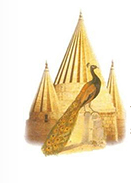credit: U.S Department of State
The U.S. Refugee Admissions Program (USRAP)
The United States remains the largest resettlement country in the world, receiving more than half of all refugees resettled worldwide each year through the United Nations High Commissioner for Refugees (UNHCR).
Who exactly is eligible for resettlement?
The United Nations High Commissioner for Refugees (UNHCR) has the international mandate to provide refugee assistance and to determine if resettlement in a third country – be it the United States or another country – is the right solution.
UNHCR uses six criteria to determine if resettlement is appropriate.
How the resettlement program works.
The UNHCR, a U.S. Embassy, or an authorized non-governmental organization (NGO) can refer a refugee to the U.S. Refugee Admissions Program (USRAP). Once a referral is made, a Resettlement Support Center (RSC) funded and managed by PRM prepares the case for presentation to the U.S. Department of Homeland Security (DHS).
The RSC helps the refugee and his /her family (if applicable) prepare their case file – taking photos, checking the facts in the files, collecting information for the security clearance process, etc. Applicants are then interviewed by an officer of DHS’ United States Citizenship and Immigration Services (USCIS).
The interviewer adjudicates the case. If approved, the applicant and his/her family undergo medical exams, which are standard for all applicants seeking to reside permanently in the United States.
A non-governmental organization (NGO) working under agreement with PRM in the U.S. then agrees to be the refugee’s sponsor. Refugees approved for admission are offered a short cultural orientation program to introduce them to life in the United States. Once all security and health checks are complete, refugees are scheduled for travel to the US.
How much time does the entire process typically require?
Worldwide, the average processing time is about one year to 18 months. But every case is different, and processing times vary.
Who Qualifies?
The Department of Homeland Security has the authority to make this decision. Under U.S. law, a refugee must have a well-founded fear of persecution based on one of the five “protected grounds”:
· Religion
· Political opinion
· Race
· Nationality
· Membership in a particular social group
Furthermore, a refugee must be deemed admissible to the U.S. and not be firmly resettled in a third country. For a list of grounds that would disqualify a refugee from resettling in the United States, please visit the U.S. Citizenship and Immigration Services website at http://www.uscis.gov/portal/site/uscis .
Is my nuclear and/or extended family eligible to join me?
Generally a “case” consists of the principal applicant, his or her spouse, and unmarried children under the age of 21. Additional relatives may be considered on a case by case basis. Please see the Frequently Asked Questions (FAQs) Regarding the P-2 for Approved Iraqi 130 Beneficiaries for more information.
Once a refugee arrives in the United States and would like to petition for other members of his/her immediate family to join them, a number of avenues are available. Under Priority Three (P-3) processing, a refugee or asylee who is at least 18, and been in the U.S. in refugee or asylee status for no more than five years can file an Affidavit of Relationship (AOR) for a spouse, parents, and unmarried children under the age of 21. This form must be submitted to the Department of State through a resettlement agency affiliate in the refugee’s geographic area.
More information on Refugees from Iraq
https://www.state.gov/j/prm/releases/factsheets/2016/254652.htm





